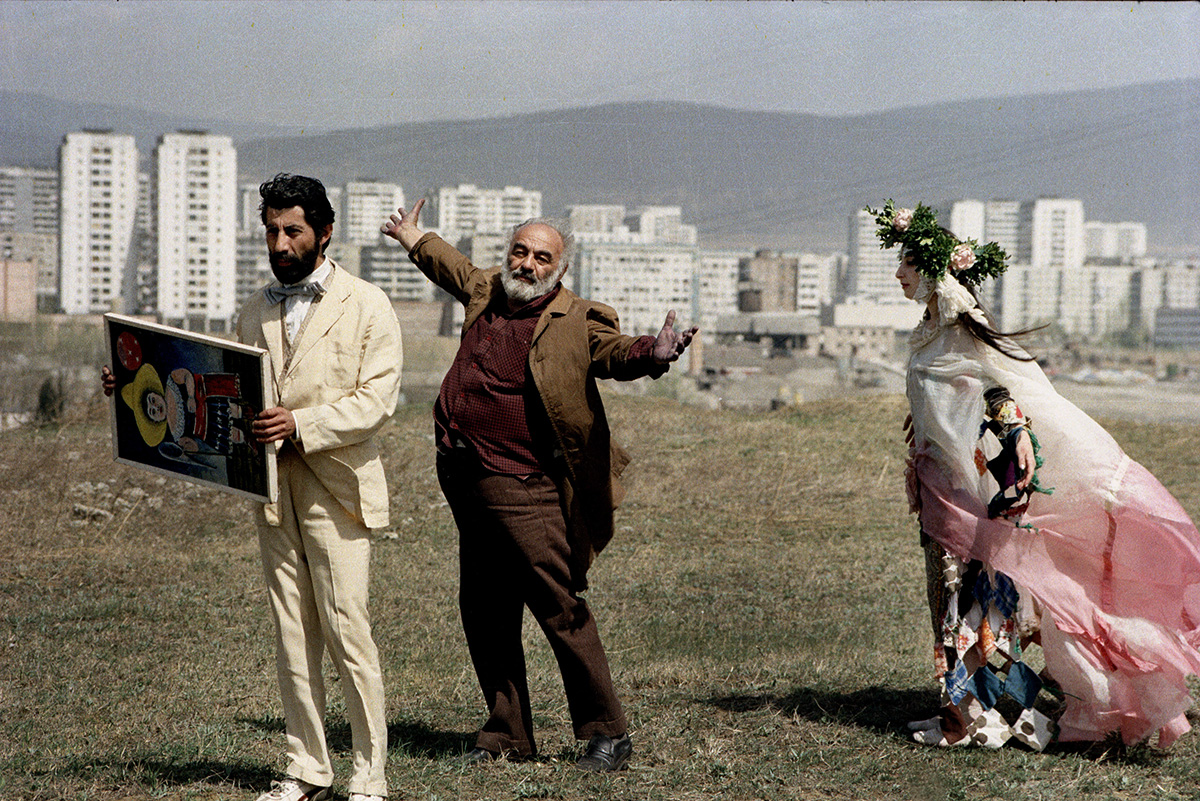
Södertälje konsthall
Texts
Sergej Parajanov- filmmaker, artist and activist 1924-1990
By Sergej Parajanov Museum
Sergej Parajanov- filmmaker, artist and activist 1924-1990
By Sergej Parajanov Museum
Sergej Parajanov- filmmaker, artist and activist 1924-1990
By Sergej Parajanov Museum
Sergej Parajanov- filmmaker, artist and activist 1924-1990
By Sergej Parajanov Museum
Sergej Parajanov- filmmaker, artist and activist 1924-1990
By Sergej Parajanov Museum
Sergej Parajanov- filmmaker, artist and activist 1924-1990
By Sergej Parajanov Museum
Sergej Parajanov- filmmaker, artist and activist 1924-1990
By Sergej Parajanov Museum
Texts
Sergej Parajanov- filmmaker, artist and activist 1924-1990
By Sergej Parajanov Museum

Related
Sergey Parajanov (Sarkis Parajanyants) 1924-1990 was born on January 9, 1924 in Tbilisi where he finished secondary school. In 1945 he entered the directing program at the VGIK (State Institute of Cinematography) under Igor Savchenko. In 1952 he started to work at the Alexander Dovzhenko Film Studio in Kiev as a film-director. Before 1963 he directed four non-remarkable full-length feature and three short documentary films. In 1964 his “Shadows of Forgotten Ancestors” (”Wild Horses of Fire”), brought him world fame. Paradoxically, his problems started just from this movie. In 1965 he began his work over an anti-war film “Kiev Frescos”, which was soon banned.

In 1966 Parajanov was invited to Armenia where he started his work on “Sayat-Nova”. With great difficulties this film was released on a screen in 1969 under the title “The Colour of Pomegranates”. It is considered to be his best work after which he was deprived of possibility of making movies for 15 long years. There was a huge gap between a poetic cinema, a brilliant representative of which Parajanov was, and especially Parajanov’s cinema-language and the official Soviet Art. In 1969, he wrote a script for his film “The Confession” that he only began working on in 1990, but sadly passed away before finishing it.
Parajanov was arrested twice because of false accusation in Ukraine (1974-1978) and Tbilisi (1982).
These years his talent of brilliant Artist became apparent. He whould say : «I was not allowed to make movies and I started to make collages. Collage is a compressed film». Museum of Sergej Parajanov houses for about thousand works: collages, drawings, assemblages, dolls.
By the end of his life he made another two films at the “Georgia-film” studio: “The Legend of Suram Fortress” and “Ashik-Kerib”. Sergei Parajanov died in 1990 in Yerevan where his museum was opened in 1991.
Sergey Parajanov Museum
Sergej Paradjanov was the author of several film-masterpieces which brought him world praise: “Shadows of Forgotten Ancestors” (1964), “The Colour of Pomegranates” or “Sayat-Nova” (1969), “The Legend of Suram Fortress” (1985) and “Ashik-Kerib” (1988). Parajanov’s contribution to the art of cinema is first and foremost his original poetic film-language, highly valued by his contemporaries. His aesthetic system also includes plastic art, based on traditions of Armenian, Eastern and European art.
The museum of S. Parajanov was founded by resolution of the government in 1988, after the first exhibition of his Artworks at the State Museum of Armenian Folk Art. At that time appropriate premises consisting of two buildings (one for the museum and the other for home of S. Parajanov) were allocated in the Ethnographic Center “Dzoragiugh”. However construction was delayed due to the earthquake of 1988 and the museum was opened in 1991.The idea of a museum, as well as all communication with the Armenian authorities, was carried out by his close friend and the museum’s first director, Zaven Sargsyan. Parajanov himself was involved in the exhibition design.
The museum also houses Parajanov’s personal be longings and presents from his friends. An extensive correspondence of the film-director, including letters from L. Brik, A. Tarkovsky, J. Nikulin, V. Katanyan and other cultural figures is also kept in the museum’s archives.
Two memorial rooms are also re-created. Parajanov’s works – assemblages, flat and three-dimensional collages, drawings, dolls and film sketches are his distinctive reaction to life and events around him, his aesthetic perception of the world. His drawings and collages created in prison are exhibited in separate hall. The Artist’s work has no direct analogies in the world art and amazes with its fantasy, wit and artistry. The use of various materials and objects imparts to it a special charm and brilliance.
The Soviet system suspended Parajanov from shooting films for almost 15 years, 5 of which (1973-1977 and 1982) were spent in prisons and “camps of severe regime.”
In the course of 33 years of its existence the museum has organised 69 exhibitions more than 35 countries – Cannes, Athens, Tokyo, Moscow, Kiev, Boston, Rome, London, Tehran, Peking, Paris, Sofia, Brazil, Canada, Vilnius, and other cities. Parajanov Museum is one of the most popular museums in Yerevan.
